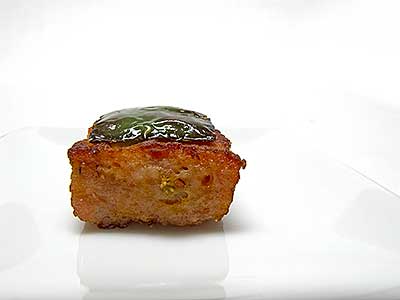December 23, 2013
Amuse-Bouche

saucisse et poivron
(sausage and pepper)
I had to eat something for dinner other than French food. After traveling around southern France for a couple of weeks I needed a change. I needed something with hot spices. I needed a different flavor palette for one meal. It’s not that I don’t like French food. I do. Very much. I just get tired of eating the same cuisine all the time. It doesn’t matter where I am. It’s just the way I am. That night I decided to try a Chinese restaurant. What a mistake. What I was served failed to even vaguely resemble dishes I’ve eaten in California or China.
When I search for non-native cuisines in foreign lands, I am often disappointed. Many ethic groups build restaurants in whatever country they may land in, but the cuisine is often modified or manipulated to fit local tastes. Any resemblance to the same food in its country of origin seems coincidental. I understand why this happens, but I don’t like it. The same thing even happened in my local area of Northern California where French restaurants up until the millennium served meals that would be strange to anyone who traveled from France after 1950.
When I was a frequent visitor to the Baltimore area in the 1980s, locals often insisted that I dine in the local “Italian” restaurants. The food was nothing like I was used to as Italian food on the west coast. I suspected that it resembled the food of the 19th-century Italian immigrants of Baltimore that adapted new-world ingredients to old-world ideas. Then it went through a century of “refinement.” I found much of it disgusting: too sweet, too watery, and too many over-cooked tomatoes. But there was one dish I generally liked: sausage and peppers. The dish didn’t resemble any you’ll find today by Giada or Lidia. It was just sweet “Italian” sausages that were sliced and pan-fried with chunks of tomato and green bell pepper. The only spice, if any, came from the sausages, and they were somewhat bland.
When I started to learn how to make sausages in the 1990s, the first variety I made was Italian-style sausages. The recipe source was the mother of a close friend. It was an authentic Americanized-Italian sausage, very mid-Western. It was very tasty.
As I learned to make more and more varieties of sausages, I began to realize that the difference between ground-meat mixtures stuffed into animal casings and mixtures stuffed into ceramic bowls called terrines was minimal. The sausage recipes were similar to those I have for French country-style pâtés, and could be cooked in the same manner. I found that the same mixtures could also be used for free-form arrangements that looked like small meat loaves. The mixtures could even be cooked in a frying pan as a patty. Because the patty was browned during cooking, the overall taste was a bit different than as a stuffed sausage that doesn’t benefit from Maillard reactions.
So recently when I found myself with some excess pork loin and back fat, sausages came to mind. There wasn’t enough meat to warrant using my five-pound sausage stuffer or even my electric grinder. Although I always have a tub of medium hog casings resting in salt in my refrigerator, this sausage would be free-form. I chose to make a mixture similar to the Italian-style sausage that I had learned many years ago. I decided to cook this batch as a large, thin, square patty using a low-temperature cooking method. My small amount of ingredients, just enough for a couple of standard Italian sausages stuffed into casings, was still enough for 30 amuse-bouche portions, even when allowing for ample sampling and testing.
To make the thin “sausage” patty, I formed a 1-cm (3⁄8-in) thin, square mound on a parchment-paper lined baking sheet. I froze this until just firm enough to be vacuum packed without the edges deforming. Once the packaging was done, I fired up a water bath and cooked the sausage as one thin piece. All the details are below.
375 g (13 oz)
coarsely ground pork, 25% fat
1⁄2 t
fine salt
pinch (0.312 t)
salt with 6.25% sodium nitrite [optional]
3⁄4 t
dried red pepper flakes
1⁄2 t
dried oregano leaves
2 T
finely ground Parmesan cheese
3⁄4 t
fennel seeds
2 T
filtered water
1 T
tomato paste
1. Combine all the ingredients by hand until the fat begins to smear. Fashion the meat into a 1-cm (3⁄8-in) thick patty and place in freezer until partially frozen.
2. Once frozen, vacuum pack the meat. Cook in 60 °C (140 °F) water until the internal temperature reaches close to the same, about 35 minutes. Chill in an ice-water bath.
3. Cut the meat into 3 cm (1-3⁄16-in) squares. Package and freeze until needed.
Yield: 30 squares.
oil
1 large
jalapeño pepper, cored and seeded, 2.5-cm (1-in) squares
1. Defrost 4 sausage squares. Heat a little oil in a small frying pan over high heat. Fry the sausages until brown on both sides. Drain on absorbent paper. At the same time, fry the pepper squares. When the squares glisten, brown a bit, and start to soften, remove from the pan. Drain on absorbent paper.
2. Place a sausage square on each serving dish and top with the cooked pepper square.
Yield: 4 servings.
© 2013 Peter Hertzmann. All rights reserved.
